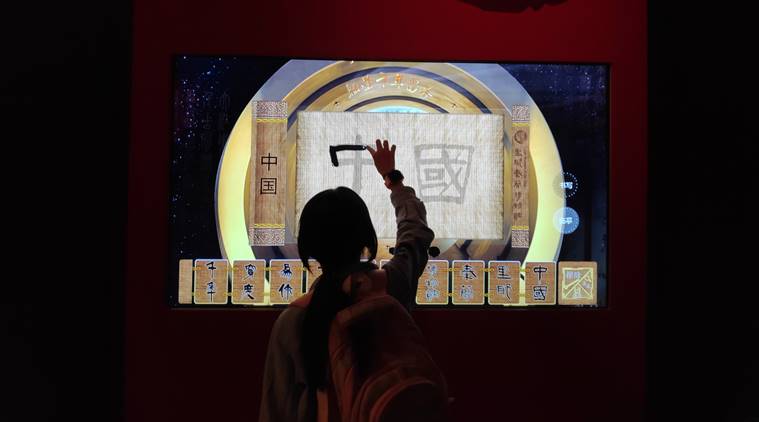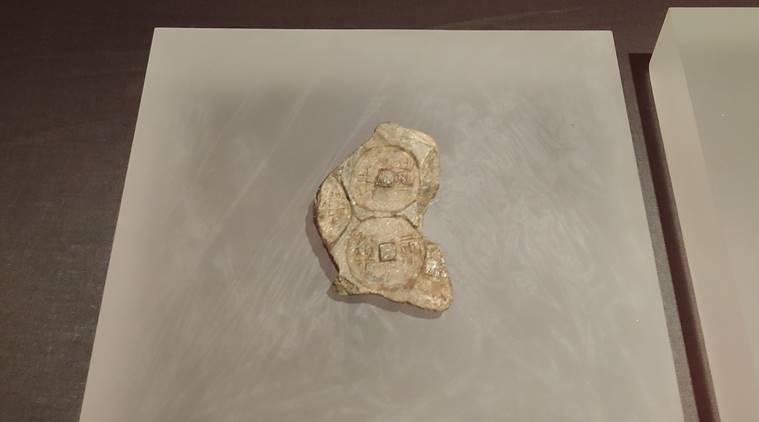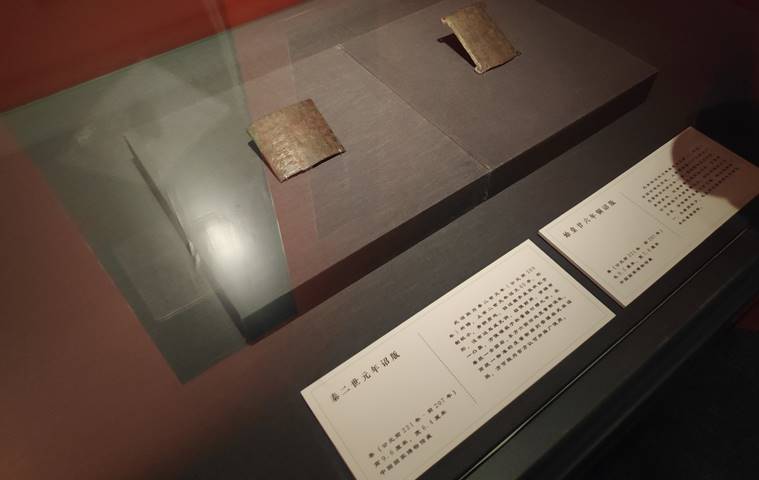Stay updated with the latest - Click here to follow us on Instagram
A tale of a small town: An exhibition in China traces the origin of the multiplication table
The pieces on display at the National Museum of China are from the collection of the Hunan Provincial Institute of Archeology in Changsha and the Liye Qin Slips Museum near the relic site.
 A young visitor traces Chinese characters at the ongoing exhibition
A young visitor traces Chinese characters at the ongoing exhibition
Seventeen years ago, wooden slips unearthed from a well at a 2,200-year-old relic site in the mountainous town of Liye in Longshan country in China’s Hunan province, are believed to have contained the formula for a simple multiplication table written in Chinese characters.
The slips are believed to be amongst the earliest and most complete such model in the country, according to Chinese state media.
 A Qin Dynasty coin mold
A Qin Dynasty coin mold
The nearly 38,000 slips, all made of bamboo and wood, were found in a well that dated back to China’s “first unified” and “powerful” but “short-lived” empire—the Qin Dynasty empire (221-206 BC). Around 175 such slips along with other relics from the ancient town of Liye are currently on display at an exhibition ‘A Tale Of A Small Town (xiao cheng gu shi)’ at the National Museum of China in Beijing.
 A Qin Dynasty bronze plate bearing an imperial edict
A Qin Dynasty bronze plate bearing an imperial edict
A 2014 article written in the international weekly journal of science, ‘Nature’, points out that the oldest known Chinese time tables, dating to the Qin Dynasty, were in the form of a series of short sentences such as “six eights beget forty-eight” and capable of much simpler multiplication.
While the ancient Babylonians possessed multiplication tables some 4,000 years ago, theirs were in a base-60, rather than base-10 (decimal) system, the article points out.
 Bamboo slips with Chinese characters
Bamboo slips with Chinese characters
However, the “world’s oldest” example of a multiplication table in base 10 is at the Tsinghua University in Beijing that received a donation of nearly 2,500 bamboo strips. Historians here said they had pieced together the world’s oldest example of a multiplication table. “21 bamboo strips stand out from the rest as they contain only numbers, written in the style of ancient Chinese”, Feng Lisheng, a historian of mathematics at Tsinghua was quoted in Nature. “Such an elaborate multiplication matrix is absolutely unique in Chinese history.”
 Visitors looking at the Qin slip featuring the multiplication formula in China characters
Visitors looking at the Qin slip featuring the multiplication formula in China characters
The pieces on display at the National Museum of China are from the collection of the Hunan Provincial Institute of Archeology in Changsha and the Liye Qin Slips Museum near the relic site. It documents the political, economic and social aspects of Liye life which was a riverside military fortress during the Qin empire. The discovery is often seen at par with the famed Terracotta Warriors (also under the Qin Empire) which were unearthed in the Xi’an in Shaanxi province in 1974.
 Bamboo slips with Chinese characters
Bamboo slips with Chinese characters
Liye was the government residence of Qianling prefecture under Dongting county. “The slips mention archives the population by which one can see the number of permanent residents, immigrants, slaves, criminals and so on in Qianling. There are also documents of natural disasters and agricultural activities, also showing the attention Qin rulers paid to agriculture,” a report in the state-run China Daily stated. “Perhaps more relevant to the exhibition visitors in the daily life of the residents of Liye – the vegetables and fruits they had, the price of rice, medical prescriptions and personal mail.”
National Museum Director Wang Chunfa said: “Hopefully the exhibition will open for people a new gate to know more about Qin rule, and provide historical information and lessons for today’s regional governance (in China).”



- 01
- 02
- 03
- 04
- 05




























